Related Research Articles
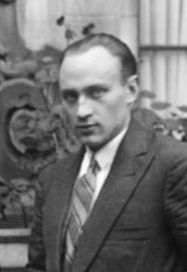
Paul Sacher was a Swiss conductor, patron and billionaire businessman. At the time of his death Sacher was majority shareholder of pharmaceutical company Hoffmann-La Roche and was considered the third richest person in the world with an estimated net worth of US$13 billion.

The University of Basel is a public research university in Basel, Switzerland. Founded on 4 April 1460, it is Switzerland's oldest university and among the world's oldest surviving universities. The university is traditionally counted among the leading institutions of higher learning in the country.
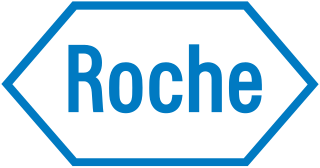
F. Hoffmann-La Roche AG, commonly known as Roche, is a Swiss multinational holding healthcare company that operates worldwide under two divisions: Pharmaceuticals and Diagnostics. Its holding company, Roche Holding AG, has shares listed on the SIX Swiss Exchange. The company headquarters are located in Basel. Roche is the fifth-largest pharmaceutical company in the world by revenue and the leading provider of cancer treatments globally. In 2023, the company’s seat in Forbes Global 2000 was 76.

Polly Celine Eveline Matzinger is a French-born immunologist who proposed the danger model theory of how the immune system works.
The Marcel Benoist Prize, offered by the Marcel Benoist Foundation, is a monetary prize that has been offered annually since 1920 to a scientist of Swiss nationality or residency who has made the most useful scientific discovery. Emphasis is placed on those discoveries affecting human life. Since 1997, candidates in the humanities have also been eligible for the prize.

Niels Kaj Jerne, FRS was a Danish immunologist. He shared the Nobel Prize in Physiology or Medicine in 1984 with Georges J. F. Köhler and César Milstein "for theories concerning the specificity in development and control of the immune system and the discovery of the principle for production of monoclonal antibodies".
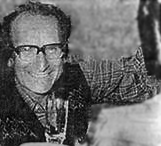
César Milstein, CH, FRS was an Argentine biochemist in the field of antibody research. Milstein shared the Nobel Prize in Physiology or Medicine in 1984 with Niels Kaj Jerne and Georges J. F. Köhler for developing the hybridoma technique for the production of monoclonal antibodies.

Georges Jean Franz Köhler was a German biologist.

Fritz Hoffmann-La Roche, later Fritz Hoffmann-von der Mühll, was a Swiss businessman who founded the pharmaceutical company F. Hoffmann-LaRoche & Co.

Science and technology in Switzerland play an important role in the Swiss economy, which has very few natural resources that are available in the country. The Swiss National Science Foundation, mandated by the Federal government, is the most important institute for promoting scientific research.
John Wilcox Stocker is an Australian immunologist and the former chairman of the board of the Commonwealth Scientific and Industrial Research Organisation (CSIRO), the national government body for scientific research in Australia. Stocker is a former chief scientist of Australia.
Geoffrey W. Hoffmann, is an Australian-Canadian theoretical biologist. Hoffmann was a faculty member in the Department of Physics at the University of British Columbia and the founder of Network Immunology Inc. in Vancouver, Canada. He is best known for symmetric immune network theory.

The Friedrich Miescher Institute for Biomedical Research (FMI) is a biomedical research institute founded in 1970. Based in Basel, Switzerland, the FMI is affiliated with the University of Basel and the Novartis Institutes for BioMedical Research (NIBR). It is named after Friedrich Miescher. As of 2021, the FMI has around 340 collaborators, of which 20 are research group leaders, over 80 are postdoctoral collaborators and over 80 are postgraduate students participating in the FMI International PhD Program. The FMI is directed by Dirk Schübeler.
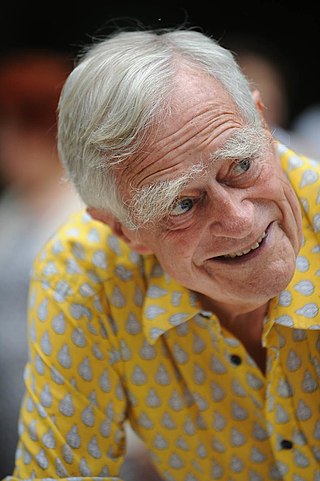
Hans Lukas "Luc" Hoffmann was a Swiss ornithologist, conservationist, and philanthropist. He co-founded the World Wildlife Fund (WWF), helped establish the Ramsar Convention for the protection of wetlands, and set up the Tour du Valat research centre in the Camargue area of France.
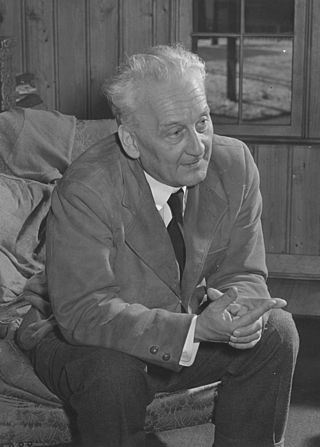
The Szent-Györgyi Prize for Progress in Cancer Research, established by National Foundation for Cancer Research (NFCR) and named in honor of Albert Szent-Györgyi, Nobel laureate and co-founder of NFCR, has been awarded annually since 2006 to outstanding researchers whose scientific achievements have expanded the understanding of cancer and whose vision has moved cancer research in new directions. The Szent-Györgyi Prize honors researchers whose discoveries have made possible new approaches to preventing, diagnosing and/or treating cancer. The Prize recipient is honored at a formal dinner and award ceremony and receives a $25,000 cash prize. In addition, the recipient leads the next "Szent-Györgyi Prize Committee" as honorary chairman.

Research at the Biozentrum of the University of Basel is dedicated to the central question of how molecules and cells create life − from atom to organism, and from the physics of life to the dynamics of multicellular systems. Accordingly, the scientists at the Biozentrum are active in a wide range of research fields. These disciplines are not strictly separated from each other, but often overlap, thus leading to new questions and collaborations.
Susan M. Gasser is a Swiss molecular biologist. From 2004 to 2019 she was the director of the Friedrich Miescher Institute for Biomedical Research in Basel, Switzerland, where she also led a research group from 2004 until 2021. She was in parallel professor of molecular biology at the University of Basel until April 2021. Since January 2021, Susan Gasser is director of the ISREC Foundation, which supports translational cancer research. She is also professor invité at the University of Lausanne in the department of fundamental microbiology. She is an expert in quantitative biology and studies epigenetic inheritance and genome stability. Recipient of multiple swiss and European awards, she was named member of the US Academy of Sciences in 2022.

Jnanendra Chandra Das Gupta was an Indian-born chemist who developed a thermosetting plastic called Indolack while working in the Swedish company Perstorp. This led to the development of the first plastic called "isolit" used in Sweden.
Emanuel Hoffmann was a Swiss jurist and art collector. He was the son of Fritz Hoffmann-La Roche, a founder of the pharmaceutical company Hoffmann-La Roche, and his first wife.

Maja Sacher was a Swiss art collector and philanthropist.
References
- ↑ Lefkovitz, Ivan (2017). History of the Basel Institute of Immunology (1st ed.). Karger. doi:10.1159/isbn.978-3-318-05935-9. ISBN 978-3-318-05934-2.
- ↑ "Paul Sacher Foundation Website". Archived from the original on November 24, 2006.
- ↑ "CV Fritz Melchers". Archived from the original on 2007-09-07. Retrieved 2008-03-04.
- 1 2 "Closing of Basel institute scatters immunologists. Science 293, 238-239, 2001".
- ↑ "FMI Home page". fmi.ch.
- ↑ "Home - Biozentrum". www.biozentrum.unibas.ch.
- 1 2 [30 Years Basel Institute for Immunology, (History, Milestones, Press Articles, Annual Reports, Publications, List of Institute Members), Souvenir CD/DVD 2001]
- ↑ [Publications & Annual Reports 1972-1999]
- ↑ Dembic, Zlatko (2011). "My Basel Institute for Immunology, My BII, My Bias". Scandinavian Journal of Immunology. 73 (6): 505–507. doi: 10.1111/j.1365-3083.2011.02552.x . PMID 21521248. S2CID 6773084.
- ↑ Abbott, Alison (June 1, 2000). "Roche brings down curtain on Swiss immunology lab". Nature. 405 (6787): 605–605. doi:10.1038/35015238 – via www.nature.com.